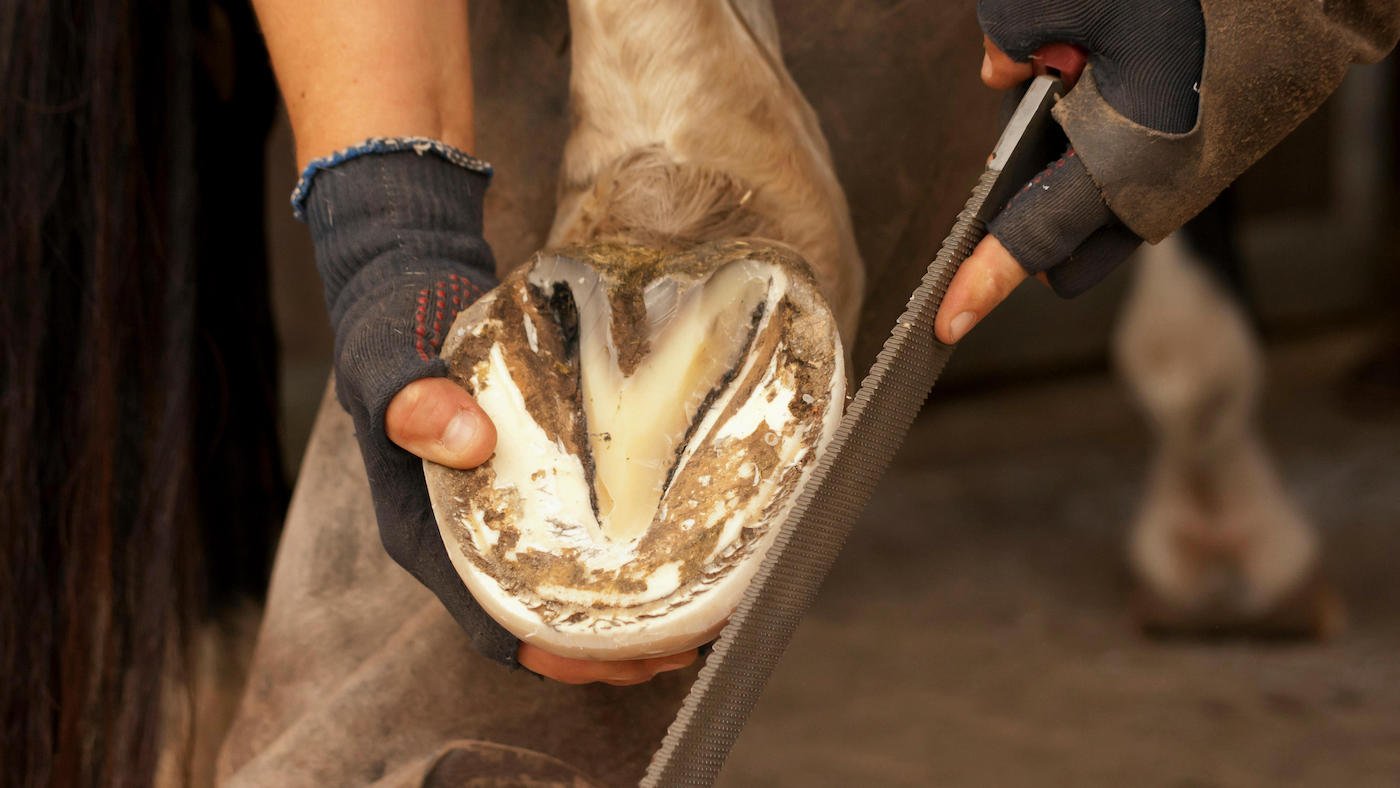
Horse Care_ When Much less is Extra – The Horse
Find out about generally utilized practices that homeowners and caretakers are likely to overdo
It’s feeding time, and a horse eagerly nuzzles his bucket as his devoted proprietor doles out his dinner. She gazes upon his excellent body-condition-score-5 physique, wishing it had been a fleshier 6. She contemplates including extra grain and hay to his ration, pondering, “Just a little extra can’t damage.” This mentality can generally do extra hurt than good, nonetheless, in relation to managing horses and their diets, drugs, and care. Typically, the perfect strategy is to “maintain it easy.”
Harry Werner, VMD, previous president of the American Affiliation of Equine Practitioners (AAEP), just lately reviewed with us many conditions in equine follow the place much less is definitely extra. Learn on to find out about generally utilized practices that homeowners and caretakers are likely to overdo.
Musculoskeletal Care
Werner has issues that many house owners and veterinarians have come to depend on utilizing joint injections as a routine—although not at all times warranted—process to take care of joint well being. “Many joint injections are administered with out proof of lameness and solely based mostly on coach suggestions,” he says. Whereas horses typically do want joint help via intra-articular injections and/or systemic joint-targeted drugs, in recent times this follow has change into a routinely administered “remedy,” he says. Joint injections are invasive procedures and may very well be injurious if needle trauma or inappropriate corticosteroid (or different) treatment use damages the cartilage.
He additionally studies that many horse homeowners are utilizing non-steroidal anti-inflammatory medicine (NSAIDs), particularly firocoxib, like a “feed complement” to deal with musculoskeletal ache in competitors horses. Any treatment—NSAIDs, specifically—can have deleterious unwanted side effects starting from gastric or colonic ulcers to kidney illness and intestinal microbiome disturbances. Use NSAIDs as occasionally as mandatory, he says, and solely when a veterinarian’s prognosis deems them acceptable, preserving in thoughts that firocoxib is the choice that’s least damaging to the gastrointestinal tract.
Farrier care is one other space the place generally much less is extra. Werner says many farriers and homeowners apply footwear and gadgets to horses’ ft with out the good thing about a fundamental hoof examination and a elementary and smart trim. In lots of circumstances trim can remedy a variety of difficult foot points. He says this kind of farrier work is especially problematic when achieved with out veterinary intervention and evaluation to focus on foot remedy to an correct prognosis.
Don’t go overboard with the barefoot trim, both. Regardless of good intentions, throughout their common visits, some farriers or hoof care professionals take away hoof wall at a price sooner than it will probably develop. Over a number of trimming cycles, a horse may find yourself with inadequate hoof and sole help and change into foot sore. Reasonably than having the horse trimmed at a particular interval, organize farrier appointments in keeping with hoof horn progress, which varies relying on a horse’s exercise and the season.
One other space of consideration is the usage of leg and bell boots. “Boots may cause issues if placed on too tightly or left on too lengthy,” says Werner. “They must be cleaned of particles and, if placed on too tightly, may cause pores and skin abrasions or inflame tendons.” Sometimes, horses don’t want leg boots except they’re concerned in arduous athletic endeavors or if the horse has conformational qualities that lead to limb or foot interference. In case your horse loses footwear throughout turnout, you need to use well-fitting pull-on bell boots—simply make sure you test the horses’ pasterns and heels day by day for any issues.
Overtraining
The subject of overtraining may devour a whole article, however we’ll point out a number of necessary factors right here. “Some show-horse strategies use longeing to exhaustion, tying up a horse’s head for hours, or longeing a horse in ankle-deep wooden chips as routine ‘coaching’ measures,” says Werner. Usually these strategies are merciless and/or injurious.
“Using mood-affecting medicines is usually used as an alternative to coaching by these with restricted time,” he provides, dubbing it “coaching in a bottle.” A few of these substances may end up in a constructive drug take a look at and are even unlawful. As an alternative of counting on such coaching instruments and fast fixes, take the time mandatory for the horse to be taught expertise and develop athletic situation.
Some riders concerned in distance sports activities consider extra time on the path is essential, when what horses want is restoration time to revive power, physique situation, and biochemical enzymes that maximize locomotor effectivity. In lots of circumstances intelligently utilized coaching and conditioning methods not more than two or three days every week will adequately put together a horse for 50- or 100-mile endurance competitions. The identical work-and-rest philosophy applies to different equestrian pursuits to optimize restoration.


